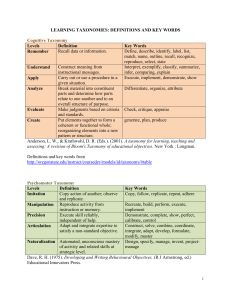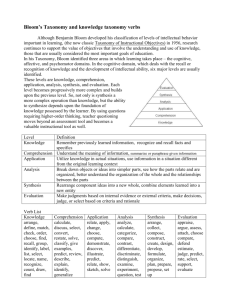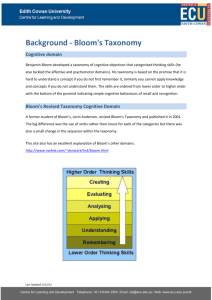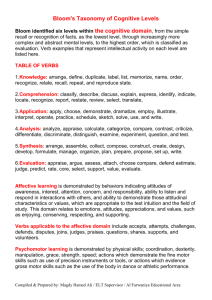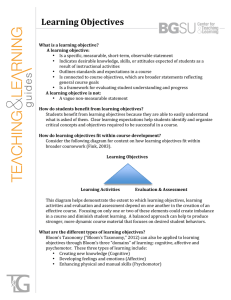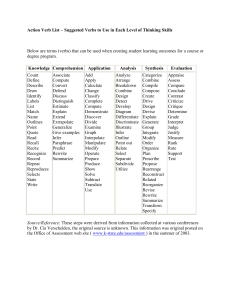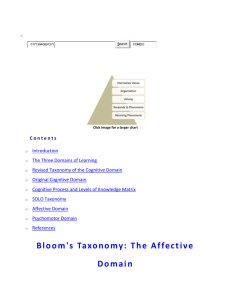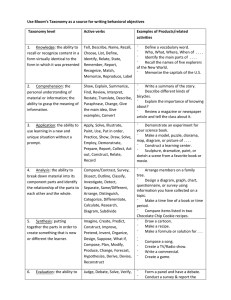Writing Learning Outcomes
advertisement
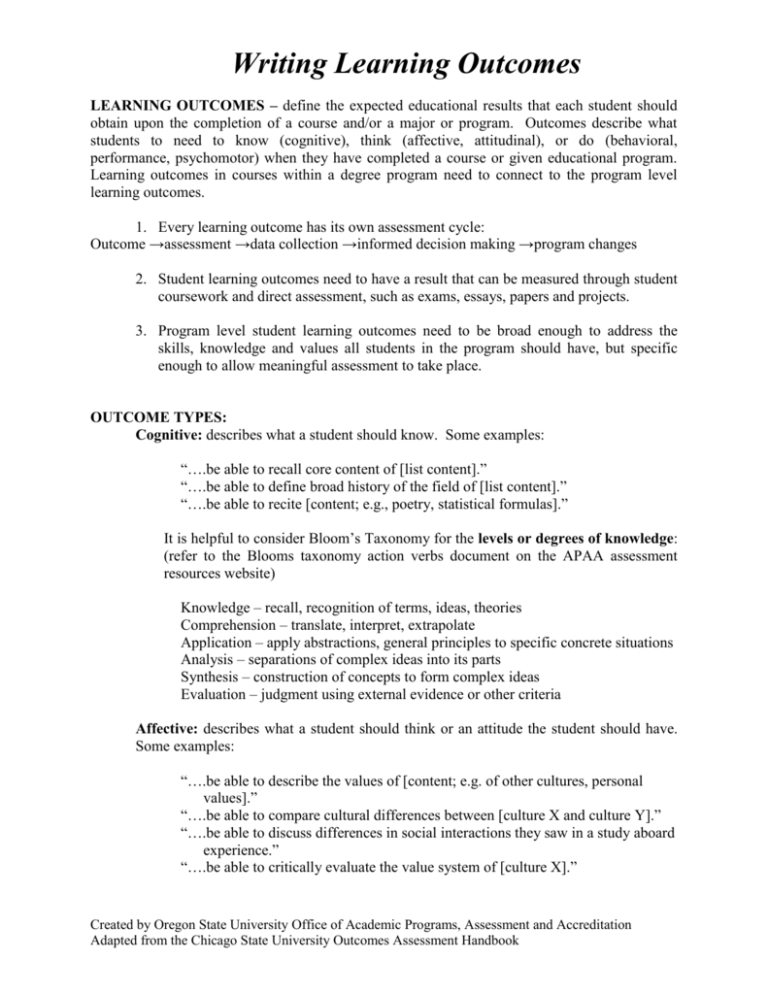
Writing Learning Outcomes LEARNING OUTCOMES – define the expected educational results that each student should obtain upon the completion of a course and/or a major or program. Outcomes describe what students to need to know (cognitive), think (affective, attitudinal), or do (behavioral, performance, psychomotor) when they have completed a course or given educational program. Learning outcomes in courses within a degree program need to connect to the program level learning outcomes. 1. Every learning outcome has its own assessment cycle: Outcome →assessment →data collection →informed decision making →program changes 2. Student learning outcomes need to have a result that can be measured through student coursework and direct assessment, such as exams, essays, papers and projects. 3. Program level student learning outcomes need to be broad enough to address the skills, knowledge and values all students in the program should have, but specific enough to allow meaningful assessment to take place. OUTCOME TYPES: Cognitive: describes what a student should know. Some examples: “….be able to recall core content of [list content].” “….be able to define broad history of the field of [list content].” “….be able to recite [content; e.g., poetry, statistical formulas].” It is helpful to consider Bloom’s Taxonomy for the levels or degrees of knowledge: (refer to the Blooms taxonomy action verbs document on the APAA assessment resources website) Knowledge – recall, recognition of terms, ideas, theories Comprehension – translate, interpret, extrapolate Application – apply abstractions, general principles to specific concrete situations Analysis – separations of complex ideas into its parts Synthesis – construction of concepts to form complex ideas Evaluation – judgment using external evidence or other criteria Affective: describes what a student should think or an attitude the student should have. Some examples: “….be able to describe the values of [content; e.g. of other cultures, personal values].” “….be able to compare cultural differences between [culture X and culture Y].” “….be able to discuss differences in social interactions they saw in a study aboard experience.” “….be able to critically evaluate the value system of [culture X].” Created by Oregon State University Office of Academic Programs, Assessment and Accreditation Adapted from the Chicago State University Outcomes Assessment Handbook Writing Learning Outcomes It is helpful to consider Bloom’s Taxonomy for affective outcomes: Receiving – demonstrates willingness to participate in activity Responding – shows interest in an activity, etc., by seeking it out Valuing – internalizes an appreciation for activity, objectives, etc. Behavioral: describes what a student can do. Some examples: “.…be able to demonstrate basic skills in [content].” “.…be able to demonstrate a more advanced skill in [content].” “.…be able to use critical thinking or problem solving skills to [content].” “….be able to develop a [content, e.g. computer generated project, art].” “….be able to perform a dramatic play.” GENERAL GUIDELINES Avoid using the word “understand.” When you find yourself wanting to use that word, ask yourself, “what does understand look like?” “what would a student who understands be able to do or produce?” Avoid using one outcome for all content or create sub-outcomes. Very broad outcomes are difficult to assess and only provide limited data for informing the decision making process. This would be an outcome that says, “Students will be able to recall, integrate, articulate and apply all essential program information.” Suboutcomes are used to further define what knowledge the program wants students to learn. There is no set number of outcomes. Be sure that each outcome is going to lead to good information, but each program should determine how many outcomes are needed to ensure students leave with the skills, knowledge and ethics expected in the profession. Created by Oregon State University Office of Academic Programs, Assessment and Accreditation Adapted from the Chicago State University Outcomes Assessment Handbook


